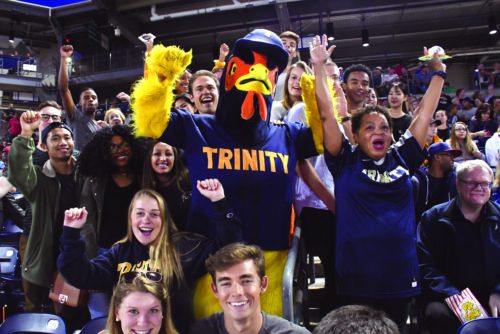How Trinity College Went Remote: An Oral History
Trinity College’s Information Services (IS) division was called upon to help the college quickly make the unprecedented transition to remote learning in the middle of the spring 2020 semester, as the COVID-19 pandemic made in-person instruction impossible.

But bringing courses from the classroom to Zoom was just a fraction of what the team—led by Vice President for Information Services and Chief Information Officer Sue Aber—was able to achieve in a short period of time. The division provided equipment, software, and support to faculty, students, and staff; made library and special collections materials accessible online; facilitated the college’s first virtual faculty meeting; and ensured that the business of the college could continue to operate remotely.
Below, Aber and members of the IS leadership team—which oversees Information Technology Services, the Raether Library and Information Technology Center, and the Watkinson Library rare book collection and college archives—recount the challenges they faced and the accomplishments they celebrated:
Emergency response and business continuity
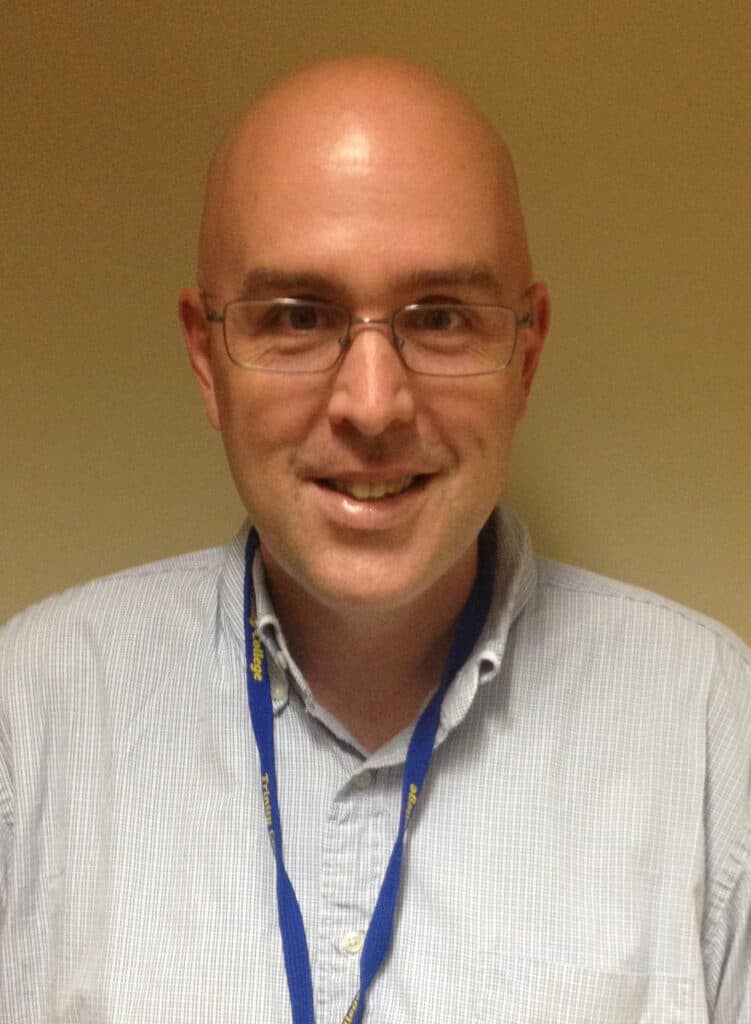
Jason Jones, director of research, instruction, technology: The IS division had started to think in mid-February about backup contingency planning for the college, in case we needed to go remote.
Fred Kass, assistant vice president for information services and associate chief information officer: Trinity’s Emergency Management Team (EMT) meets regularly and IS is a part of that. That team’s COVID-19 task force was led by Sue Aber and [Vice President for Communications and Marketing] Angela Schaeffer, who were asked by President Joanne Berger-Sweeney to take the lead on the college’s response to the pandemic. The task force brought together a much wider group of folks to take specific actions. There were two or three weeks of decision-making happening in daily meetings in March.
Sue Aber, vice president for information services and chief information officer: Angela and I quickly realized this was much bigger than what we could manage on our own, so we developed working sub-groups. We thought about ways to segment the work in order to get us through the semester. I got involved in ways that were outside the normal IS responsibility. We knew the right people to bring into the conversation to help work through the process. It was wonderful to partner with Angela; people were thirsty for information and answers and we addressed the need to communicate in a very timely manner. At first, the college planned for the remote learning period to last for two weeks after spring break, but the reality soon became that it was going to extend beyond that.

Kass: One of the early things that the EMT discussed was identifying critical functions needed to be accomplished for the college to continue to operate, like distributing paychecks and paying and sending bills. We worked closely with the business office, making sure they had the equipment at home to access the college’s data systems to accomplish those things. To add redundancies, the IS staff became backups for business office staff.
Aber: At times it was overwhelming; we were doing this nonstop, seven days a week for a period of time. It felt like every decision the college made had some impact within IS that required us to react, often without a lot of time. It really required very quick turnaround on many different levels. The whole IS division supported this effort in a variety of ways; it rallied the whole team.
Kass: The amount of custom programming and changes that happened in a short period of time was incredible. I’ve been in information technology in higher education for 25 years or so and I don’t think I’ve seen anything like this. Every change needs programmers on the back end, making sure it works.

Mike Cook, director of enterprise applications: Our group supports administrative applications used by numerous offices around campus. We were quickly tasked to provide software solutions to meet emerging requirements. We provided a mechanism using PeopleSoft self-service to allow students to change the grading basis to pass/fail for any of their courses, if they chose to. We also worked on a student refund process for unused room and board, the subsequent CARES distributions from the federal government that had to be directly funded to the students, and we’ve been working closely with the Registrar on fall and winter courses.
Resources for employees
Kass: We made sure all college employees had equipment to do their work remotely. We loaned out equipment if people did not have equipment of their own that could work at home. We repurposed every laptop in our inventory and some from our computer labs and got them out to employees. We also put in large orders to purchase new equipment, but it often took months to arrive. We purchased a pile of webcams from Amazon, but it became progressively harder to get the same webcams as the demand and prices went up. We gave employees guidance on how to work remotely and asked them to contact us if they were not able to do that. We tried not to stand up new services and instead relied on the existing remote desktop and VPN and taught people how to use them. It was all about finding the best ways to help individual people; one solution just couldn’t solve everything.
Aber: While the rest of the campus was planning to go remote, we had to prepare our own operations to go remote, too. The IS help desk, which you think of as a very in-person operation, had to prepare protocols to provide the same high level of service to our constituents when everyone was working remotely. Communication had to be so much more intentional to make sure everyone was on the same page. Three staff members took the lead in putting out a staff survey to reach out to staff across campus to see if they felt they were being supported and if there were other needs. People took a lot of initiative in this time and were creative with their solutions.
Kass: The college’s recent switch to Skype for Business has allowed people to answer their own work phones from wherever they are; the IS help desk operates remotely like this. That also allowed us to stage an in-person call center to field calls about initial COVID concerns of parents and students, and later a remote call center regarding the housing refunds. That tested the limits of Skype for Business.
Jones: Strategically, the enabling first step that let us do almost everything else was the decision that we made to start working with Zoom on an enterprise basis, which we had not been doing before. The networking team got that up and running within a couple of days.
Aber: There was a lot of conversation across the institution about whether Zoom would hold up to the amount of traffic. It wasn’t just us turning to Zoom; it felt like it was suddenly every institution around the world. That was something we worried about that really didn’t end up being problematic. It’s held up well.
Kass: Trinity accounts hosted about 17,000 Zoom meetings in about 90 days. What’s striking to me is that this hasn’t slowed down in the summer; we are holding around 200 Zoom meetings a day most days.
Resources for students
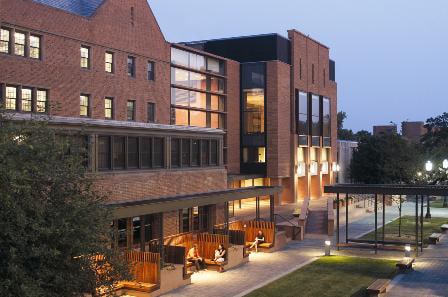 Kass: The college developed a process of buying low-cost laptops through the Student Emergency and Equity Fund and providing them to students to help bridge the technology gap. Some students don’t have home internet, which is needed for remote learning. The federal government and internet providers often offered solutions, but they were hard to navigate. One of our student employees, Fede Cedolini ’22, took charge of researching a lot of free and low-cost options for students and helping them get internet connections wherever they were in the world. He found out where they were, found programs in the area, spoke with the students and carriers, and worked with the Student Emergency and Equity Fund to pay when there were no other options.
Kass: The college developed a process of buying low-cost laptops through the Student Emergency and Equity Fund and providing them to students to help bridge the technology gap. Some students don’t have home internet, which is needed for remote learning. The federal government and internet providers often offered solutions, but they were hard to navigate. One of our student employees, Fede Cedolini ’22, took charge of researching a lot of free and low-cost options for students and helping them get internet connections wherever they were in the world. He found out where they were, found programs in the area, spoke with the students and carriers, and worked with the Student Emergency and Equity Fund to pay when there were no other options.
Federico Cedolini ’22, head consultant for the Information Services Desk and student tech for the media technology services and distributed computing teams: When we had to stop working in person, I was contacted to see if I wanted to still work remotely from the dorm. [Director of Constituency Services] Ann Marie Krupski and Fred Kass asked for help with finding students internet access for their houses. I explored options and contacted different companies to see what they were offering. This work was very important to me, because I knew that if I would have gone back home to Argentina, I would have been in the exact same situation as these students because my parents don’t have internet access at home. I’m grateful that some of the biggest internet companies in the U.S. decided to give free access to many college students so they could complete their studies. The students were glad we were here during this difficult moment to find options that were not that obvious and to help them find a path through this situation. It’s not easy and it’s overwhelming thinking they might not have a way to complete the semester. I’m sure this was a relief for some people.
Aber: Fede has done a phenomenal job for us and we’re grateful for the work he has done.
Supporting the faculty remotely
Jones: [Former Dean of Academic Affairs and Professor of Language and Culture Studies] Anne Lambright, [Associate Professor of Economics and Faculty Secretary] Mark Stater, and I got together a week and a half or so before spring break to talk about how to support faculty when we needed to go remote. We decided to plan a series of in-person workshops on instructional design principles, working with Moodle, video, narrative PowerPoints, and how to use Zoom. At the time, no one knew what Zoom was or how to host a call. We got just a few days of those in-person workshops done before we realized we were going to have to go virtual. Since March 13 we’ve had virtual open hours for faculty members on Zoom every business day. During the semester we had between one and three staff members in that ‘room’ at all times. In the summer we have a student technology assistant, working virtually, in that room.
Aber: Jason’s team did a lot of the heavy lifting and the very visible work with the faculty and partnering with the Center for Teaching and Learning, and identifying tools and strategies for bringing the courses online.
Jones: There’s a certain amount of specialized software in classrooms and labs that are licensed to use just in those places. We identified solutions to provide access to that software virtually. The process to get that stood up, according to the vendors, normally takes about a year. We did it in about seven business days. A lot of vendors did start providing special versions of their software during COVID. The work that the distributed computing and networking team did to get that set up has helped us move forward with plans for providing that same service, should we need to do it again this fall.
Aber: Jason has also been able to participate in some of the faculty governance committees, which has helped us tremendously in understanding what the plans may or may not be and sharing with the faculty some of the things we are thinking about in IS. It’s an educational process that goes both ways. It’s been beneficial for the faculty and for the division.
Jones: For the college’s first virtual faculty meeting, held on Zoom in March, we probably over-planned it a little bit, but that was okay. We needed to make sure voting protocols worked and that everyone could communicate without it degenerating into chaos. [Instructional technologist] Dave Tatem and I spent several days working with Mark Stater to make sure that was all possible. More than 200 people attended the first virtual faculty meeting. A lot of credit goes to Mark for staying calm, being flexible, and being able to tolerate a certain amount of ambiguity.
Access to library materials

Katie Bauer, director of collections, discovery and access services, Raether Library and Information Technology Center: The library has more e-books than print books. We have over a million titles in online books and 85 percent of our budget is electronic resources, so we knew that we could support a lot of what people needed remotely. What we didn’t have time to do was to digitize some of the print reserve collection. We were able to digitize some films for faculty to stream; we helped them with figuring out e-books and bought e-book replacements for books when we could. We were trying to establish the biggest online collection we possibly could. We have EZProxyServer, so a Trinity person goes to the link for an e-book, logs in with their Trinity credentials, and that authenticates you to get access to that resource.
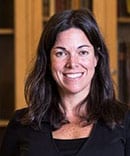
Christina Bleyer, director of special collections and archives, Watkinson Library: The Watkinson Library offers a lot of public services. Most of our instruction sessions for classes are face to face, and we do individualized research consultations when patrons come in to conduct research. I am thrilled to say we were able to shift those personal interactions to remote interactions through Zoom. We set up instruction sessions through Zoom and we used a lot of digitized content for classes, so we were able to still show faculty and students how to search our collections and use our resources. We also just acquired an object and document viewer so that we can remotely show materials that are too fragile to be digitized or are three dimensional. In addition to these public services, the Watkinson generally creates physical exhibits in our reading room and in other spaces in the library; instead, we have created online exhibits to showcase our collections.
Bauer: Since faculty were remote but still needed materials, we started shipping items directly to faculty from Amazon, which helped to speed things up. Our biggest challenge right now is getting ready to open up the library again, getting staff back in the building, and figuring out how to offer our services in the fall. We want people to be safe, but we also want people to be in the building and using it. Through this whole process, our staff has been really fantastic. They’re so dedicated and it’s been wonderful to work with them.
Bleyer: We have a great team. I was really impressed with how fast everyone transitioned to remote work. For the Watkinson, there’s a lot of back-end work that had to happen for us to use some new digital platforms to be able to enhance and provide the best access to our materials. We’ve been able to complete a lot of important projects remotely and I was really impressed with how smoothly everything went. We didn’t miss a beat; we had work we could do remotely and we just did it.
Jones: Our research librarians participated in workshops as well, and helped train people on Zoom and Moodle. They continued to offer both research instruction for classes and research appointments with students, all remotely. They also pulled together research guides on how to take advantage of the online resources available at Trinity.
Kass: The library also removed all fines for books not returned last semester and remained open as a 24-hour area for students on campus to continue to do work. And the post office, which is part of the IS division, is considered essential, so staff was on campus three days a week delivering mail to essential departments and students still on campus.
Planning for the fall
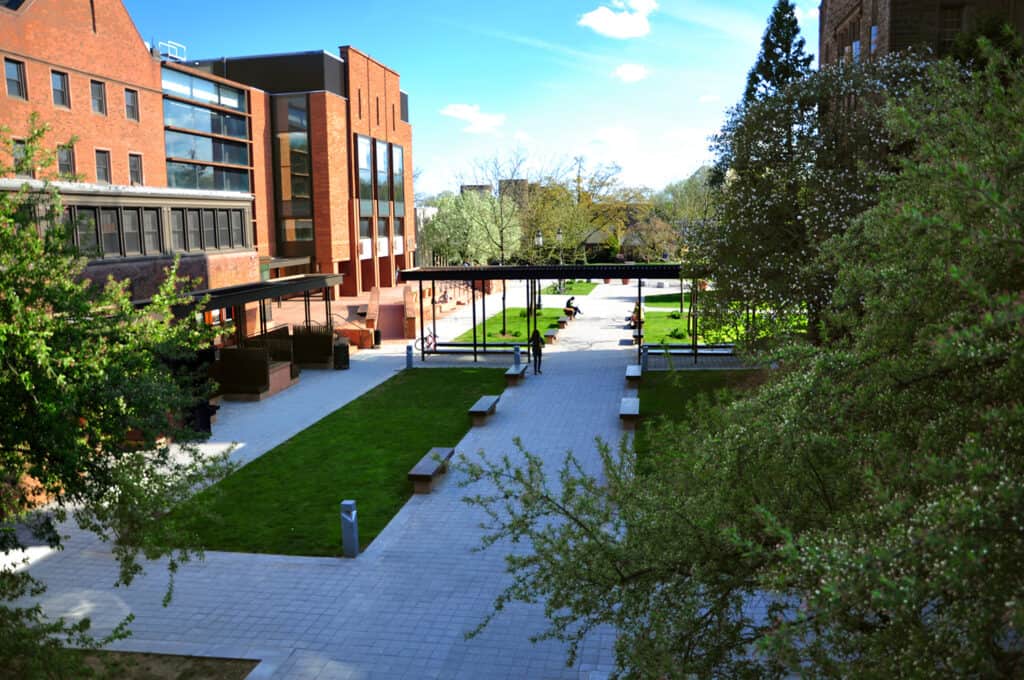 Kass: Summer is usually the busy season for IS; we often schedule our major projects for times when other people aren’t around. This year it’s been difficult, but we still have to do those big-picture things. On top of that, we are looking at how to convert classrooms to hybrid learning environments so some students can connect remotely in September.
Kass: Summer is usually the busy season for IS; we often schedule our major projects for times when other people aren’t around. This year it’s been difficult, but we still have to do those big-picture things. On top of that, we are looking at how to convert classrooms to hybrid learning environments so some students can connect remotely in September.
Aber: There’s really no break here. We have wrapped up the spring semester, but we’re thinking really hard about what the fall might look like. We are readying the classrooms and thinking about additional technology for the classes to support remote and hybrid models. IS works on the logistics of the classroom furniture and what spaces will and won’t work with social distancing, how to make nontraditional spaces work, and working with faculty to move their courses online if that’s what they decide to do.
Jones: Social distance classrooms and remote learning situations need audio-visual solutions to cover the room in an adequate way.
Cook: IS is going through each of the classroom spaces, reconfiguring to accommodate social distancing and adding or adjusting technology to improve remote instruction capability. That’s an incredible effort, handled primarily by John Dlugosz in coordination with staff from our media technology services and distributed computing groups.
Collaboration across the institution
Kass: When IS folks do their jobs well, people don’t realize that it’s a difficult job. A lot of days, it’s quiet, behind-the-scenes work. Trinity is a great and supportive community, and I am pleased that the IS staff was recognized with faculty commendations for their meritorious service during the pandemic. All of this work is a partnership; with faculty, with administrators, with staff in various areas. I don’t think there’s one department—academic or administrative—that didn’t have to do heroic things during this time. Everyone pitched in and I think the semester went as well as it could have. It’s impressive that such a large organization and one with this many moving parts could pivot so quickly.
Aber: Each group within IS had a role to make this all possible. The division really collaborated. But really, the collaboration has been terrific across the entire institution. People demonstrated some agility and nimbleness that maybe we weren’t always known for.
Kass: It’s a relatively small organization and staff members throughout the college just jumped in to try to find solutions and get things done. That’s true generally, but that’s been very true during this COVID pivot. Every week, there are unique requests to do business differently. We had to reinvent tons of processes that we’ve done in the past. It’s invigorating and it’s fascinating; we’ve always spent time trying to introduce new technologies to the community, and now they can’t come out fast enough.
Aber: I love my team. There are so many things our group has done that I’m really proud of. I heard from numerous faculty and staff members thanking us for the work of individuals. Everyone was pleased with the support, how available our team members have been, and how thoughtful they were. With this, there’s a level of appreciation across the campus that we don’t always see and there’s a level of collaboration that is far and above what we typically experience. We’ve gotten a lot of support institutionally and we are appreciative of that. I know people have put in a tremendous number of hours to do what needed to be done to move the college forward.

